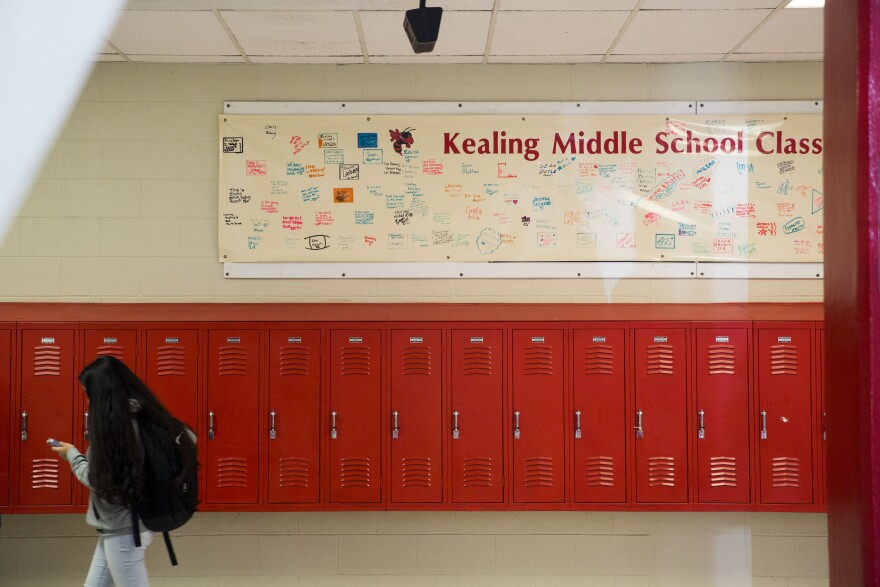At the beginning of KUT's 12th and Chicon project, we told the story of Anderson High School — a beacon of the black community in East Austin until its forced closure in 1971 as part of desegregation. But Anderson wasn’t the only neighborhood school to close. Kealing Junior High School did, too. It was reopened in the mid-1980s as a neighborhood school with a magnet program, but the tensions of the past still linger in the school’s hallways.
Kenisha Coburn is trying to change that.
On a Tuesday afternoon, Coburn stands in the middle of the hallway at Kealing Middle School. She’s watching a group of students walk from the cafeteria to their next class. Some students run by her. Coburn stops them, makes them go back to where they started running and walk.

“They don’t make eye contact when they’re sprinting," Coburn says, laughing. "They’re like, ‘Shoot. She didn’t see me. She didn’t.'”
Coburn is in her second year as principal of the middle school. The school is divided between the magnet program, which accepts students from across the district, and the academy program, which is made up of students from the neighborhood. One of the first things Coburn noticed was the racial division. Most of the students in the magnet program are white or Asian; most of the academy students are black or brown.
“When you have an advanced academic program and the perception is that it only welcomes white and Asian students," she says. "Then the message, intentional or not, to black and brown kids is: If that’s what it looks like to be advanced academic, then obviously kids like me aren’t."
The school is academically successful, but that success isn’t equal among students. Nearly all white students pass the state standardized tests. The numbers are much lower for African-American and Hispanic students. But Coburn says that achievement gap doesn’t mean black and brown students are intellectually inferior. Many of them bring issues to school that make it more difficult to learn.
She says she has students with mental health issues and family challenges. “You can’t learn yet, because there are these big things you’re dealing with that are getting in the way," Coburn says.
The racial divide in the school today is also a reminder of Kealing’s history, she says. The mostly black school was closed in the 1970s because of forced desegregation.
“You had to leave your community and go across town...and there’s a whole lot of just nasty, deep, deep history of loss," she says. "Whether or not it was intended to be that way, that’s the feeling."
A lot of her job is figuring out ways to get underrepresented students to realize their potential and open doors to success, but that can be difficult.
“Once you start opening them and you see students or families not walk through, you realize it’s no longer just about the door being open, but the history being so pervasive that, ‘I don’t feel like I’m going to be comfortable when I walk in, so I’m not going to.’”
Coburn says she often pushes students into uncomfortable situations like harder classes, after-school clubs or sports. This year, Kealing also changed its magnet admissions process so half of the students are accepted based on their ZIP code.

Magnet and academy students can take the same electives, and they have advisory period together. Coburn also implemented trainings for teachers about micro-aggressions. Many of the changes are driven by teachers, who took it upon themselves to examine the school’s history and suggest changes to improve the school for all students.
“Our teachers are much more capable of and ready to collaborate across all of the lines that we have drawn in the sand,” she says. “They didn’t draw them. They’ve been drawn by other people, and they’ve been forced to live within them.”
Teachers can also teach classes in both the magnet and the academy programs.
Next fall, Coburn expects the new sixth grade class in the magnet program to look a lot more diverse. She hopes that visible change will be the start of a new chapter in Kealing’s history.





